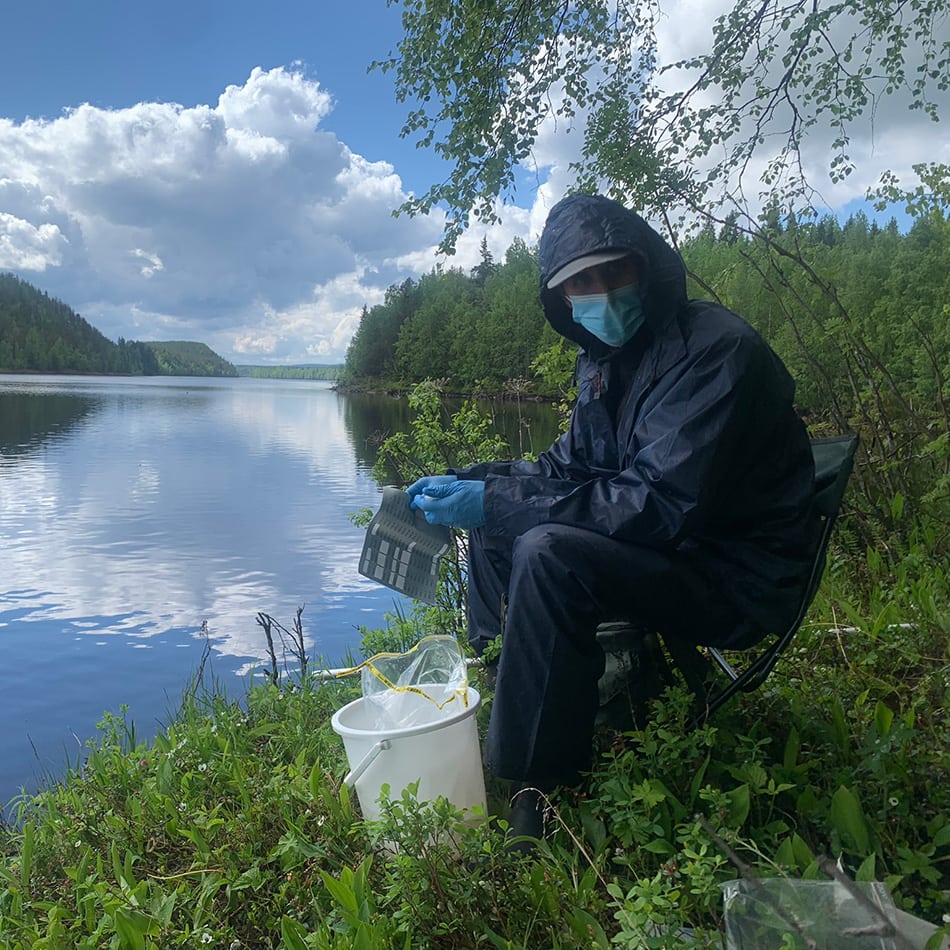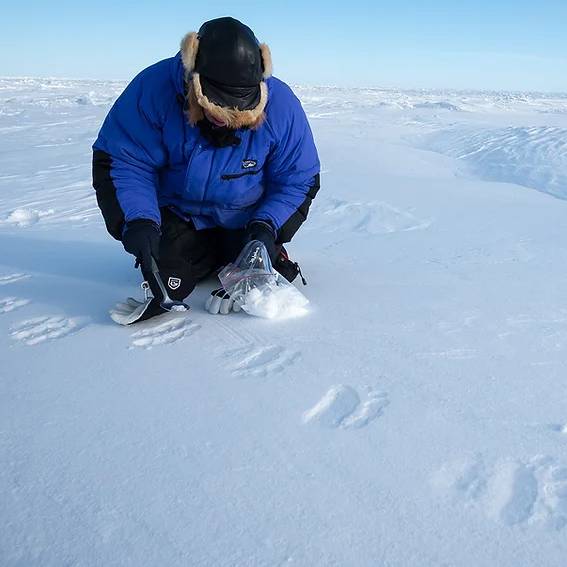Thanks to the fact that all living organisms leave traces behind in the form of small DNA fragments, we can use genetic methods to map the biological diversity in many types of environments.
We have extensive experience in field planning, sampling, genetic analysis and evaluation of eDNA data from water, snow and soil. We study organism groups such as fish, mussels, mammals, amphibians, fungi, algae and bacteria, expanding our services as needed.
We offer biological inventories, surveys and data for authorities, companies, interest organizations and educational institutions. Regularly providing customers with reliable biological data for permit assessments, recipient control and environmental assessments.
We assist throughout the entire process, from planning and sampling, to results and analytical reports. Feel free to contact us for your needs.

We have extensive experience in both collection and genetic analysis of eDNA from aquatic environments such as wetlands, lakes, waterways and marine environments. We work widely with permit issues for large-scale marine wind power projects as well as smaller species inventories of ponds. We analyse presence of bacteria, amphibians, fish, mussels and marine mammals.
Winter-active mammals such as lynx, polar bears, wolverines and otters leave footprints in the snow during winter. These footprints contain eDNA that we sample and analyze for species, individuals and sex. The method makes it possible to investigate winter-active wildlife and their genetic health.


Bacteria, fungi and invertebrates play an important role in maintaining healthy ecosystems. We help you map these organisms by analyzing eDNA from soil. We can cover large areas in a short time to provide a high-resolution picture of the diversity and identify biological cores of value in forests and land.
There are several different types of analyses that can be performed using eDNA, depending on the question and the type of organism being studied.
Single-species analyses (qPCR/ddPCR/dPCR):
Answers the question: Is species X present? The analysis determines presence/absence of a specific species in a sample. qPCR/ddPCR/dPCR measure the amount of target DNA present in a sample. This method is also efficient to detect diseases and pathogens.
Multi-species analyses (metabarcoding):
This involves sequencing DNA regions which detects variation between different species, from a mixed sample of eDNA. This is used to identify all the species present in the sample within a taxon using just one analysis per taxa. Metabarcoding is particularly useful for studying complex communities, such as those in soil or water.
Metagenomics
This involves sequencing all of the DNA present in a sample, not just the target organism(s). Metagenomics can provide a more comprehensive picture of the biodiversity present in a sample and can also be used to identify functional genes and pathways.
Microsatellites:
Small non-coding fragments on nuclear genes which vary in size between individuals of the same species. The method is used for paternity testing in humans and for population genetic and ecological studies of wild animal populations. MIX Research Sweden works on projects to identify individuals from paw prints in the snow left by individual polar bears and lynx. MS analyses can also be performed from tissue samples.
Sex analysis:
eDNA from snow prints can be analysed for sex determination by identifying small DNA fragments from x and y chromosomes in mammals.
Sitemap
Address